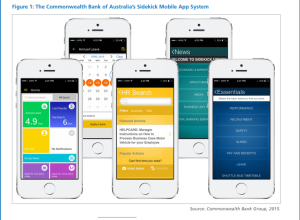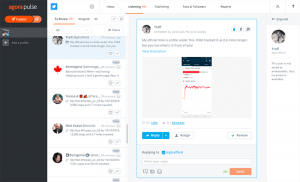Visuals are important to make the content lively and engaging for your readers. However, many webmasters use stock images on their websites because they are easy to find.
But do you know it hurts your SEO? Google hates duplicate content, be it in the form of text or images. Therefore, it is essential to create and use original images.
Why Should You Use Original Pictures?
Since stock images are free, they are heavily circulated throughout the web. Having the same photo as everyone else makes it harder for a new website to rank in the Google image search. Besides, it increases your chances of getting penalized by Google.
Another reason to use original images is that stock photos lack authenticity. No matter how beautiful they are, they won’t reflect your brand personality.
With unique pictures, you have control over the message the image conveys.
Reboot Online did an experiment to determine if unique pictures impact website rankings. They found using original images has a positive effect on organic rankings as well as image rankings when compared with equivalent sites using duplicated images.
They created two sites, one having original images and the other one having duplicate images. Here is a comparison of the websites, side by side. The content and other things stayed the same.
The rankings of the websites over a three month period showed clear results with the original site emerging as the winner.
Tips to Boost Your Rankings With Unique Images
Now that you know why you should use unique pictures let’s take a look at how you can boost your rankings by utilizing them.
1- Optimizes Your Images for Speed
Images use a lot of space on the website, especially when you upload high-quality pictures. According to HTTP Archive, photos make up 46% of a total web page’s weight.
Use tools like PageSpeed Insights to determine how images are affecting your site speed. It also shows what you can do to reduce the loading time and estimated savings.
Your next step should be to compress your images before you upload them to your site. Choosing the right format for your image ensures the graphics look better on both large and small screens while occupying the least possible space.
Usually, most websites rely on JPEG and PNG formats. However, the new WebP format provides superior compressions as compared to other formats. This decreases the image size, thereby increasing the site speed. As a result, you will see an improvement in your site’s ranking.
2- Write Descriptive Titles, Captions, Filenames, and Text
Google can’t see the images on your website. It relies on the page’s content, including image title, caption, and filename, to understand what a picture is about.
Alt text (used to describe an image) helps people who can’t see the picture (due to visual disability or slow internet connection) determine what it is all about.
Even Google uses Alt text to decipher the relevancy of an image with the content. Google says, “It uses alt text along with computer vision algorithms and the contents of the page to understand the subject matter of the image.”
Let’s consider an example to understand this better. Suppose you want to add an image of a dog playing with water. Here’s how you should write the details.
- Filename: dog-playing-with-water
- Title: Dog playing with water
- Caption: Dog playing with water
- Alt text: Dog playing with water
When Google better understands the context of the image in your content, it is likely to position your website higher for relevant search queries.
3- Offer the Best Possible User Experience
Google aims to offer the best possible experience for its users. Therefore, it is essential to ensure the image is relevant to the context of the page.
Here are some tips to improve the user experience via images:
- If an image doesn’t add any value to your visitors, avoid using it in the content.
- Place the images near relevant text. Also, explain what the image contains to help Google better understand it.
- Don’t embed important texts inside images. Your site visitors using screen readers won’t be able to see what’s written inside the picture and page translation doesn’t work on pictures.
- Publish good content on your page. High-quality content is as essential as unique visuals to rank in Google Images.
- Ensure the pictures you upload are responsive. They should look equally well irrespective of the screen size.
4- Add Structured Data
Structured data helps Google display your images as rich results. It also includes a prominent badge, which gives users relevant information, thereby attracting high-quality traffic.
Once you add structured data, here is how it will appear in Google Image search results. It includes the rating and the price of the product.
To add structured data to your website, visit Google Structured Data Markup Helper. Select the type of data you wish to mark up. It includes articles, book reviews, events, job postings, local businesses, etc. Enter your webpage URL and click on “Start Tagging.”
Choose the picture you want to add structured data and select “Image” from the drop-down menu. Add other information, like name, date published, article section, and publisher.
5- Craft a Compelling Page Title and Meta Description
Google Images automatically creates a title and a snippet to provide users with the best possible information depending on their query. This means an individual might see a different page title and description for the same image for distinct search queries.
Google uses various sources to generate a title and snippet for your images, including your H1 tag and meta descriptions.
Make sure to create a compelling page title and description while following Google’s title and snippet guidelines. It includes:
- Writing a descriptive and concise title. Google says, “avoid vague descriptors like Home for your homepage or Profile for a specific person’s profile.” Instead, write your brand name along with the word homepage or include the person’s name for the profile section.
- Ensuring every page in your site has a title specified in the “<title>” tag.
- Avoiding stuffing keywords in titles and meta descriptions.
- Creating a unique title and description for each page on your website.
Final Thoughts
With the rise in visual search, getting your website on the top has become more important than ever. Unique pictures help your brand stand out from the crowd. Follow the five tips mentioned in the article to improve your content’s ranking with original images.
Digital & Social Articles on Business 2 Community
(49)




